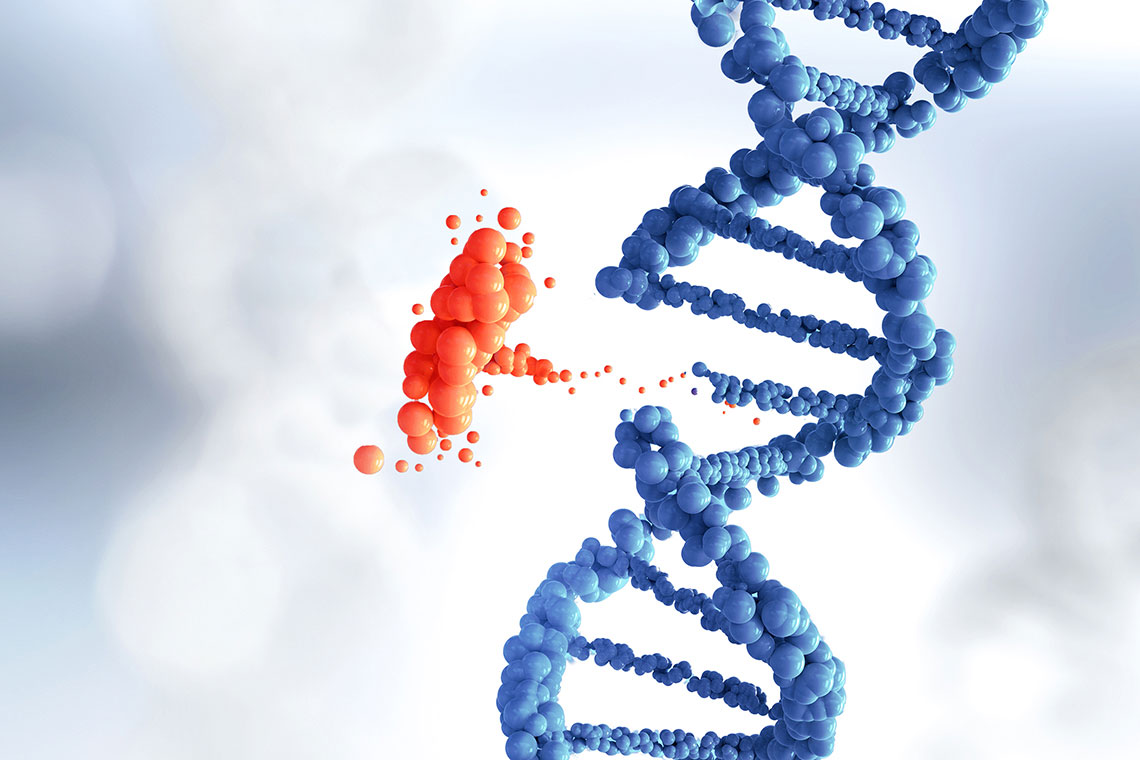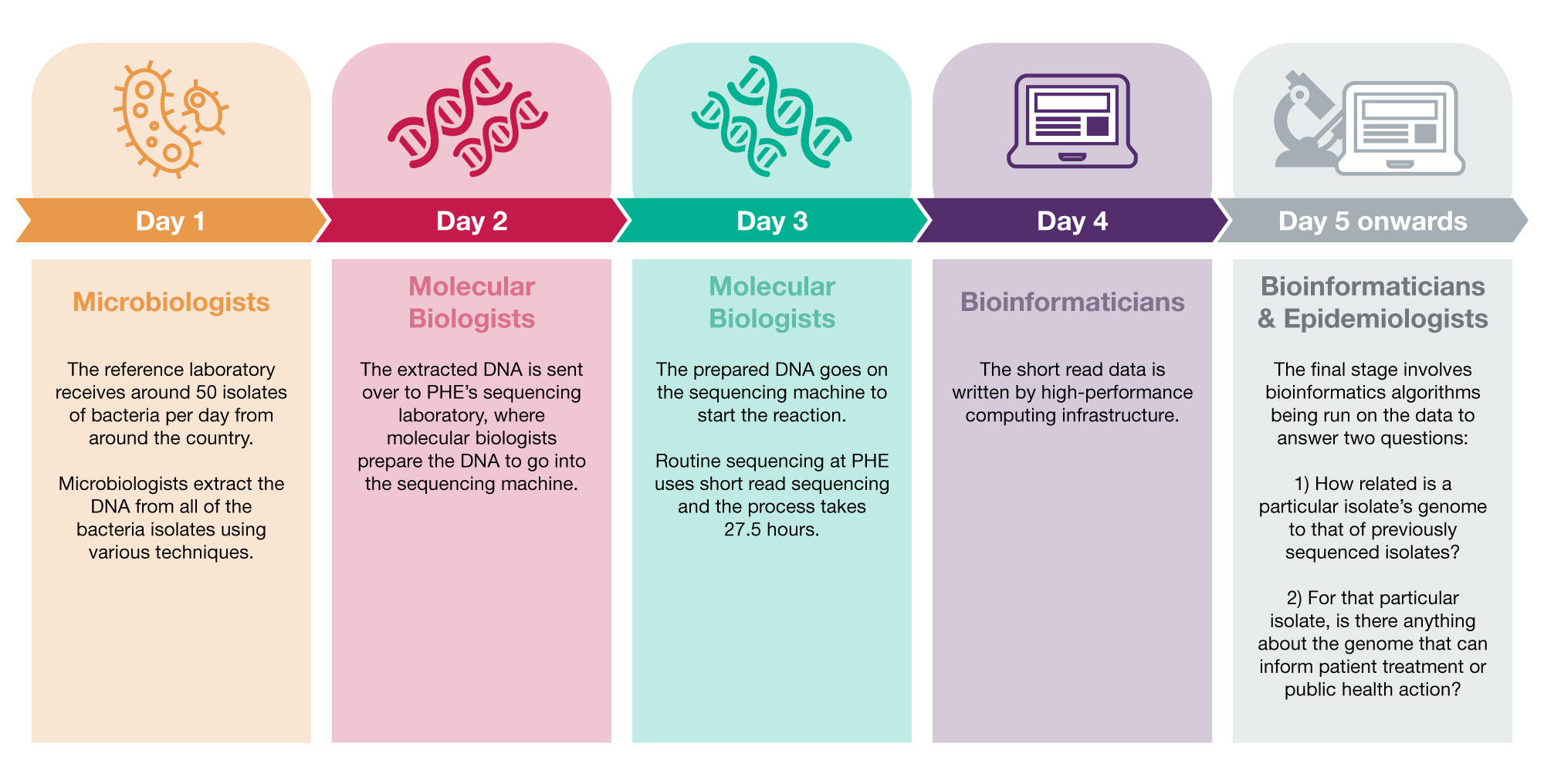The greatest advancement in whole genome sequencing is figuring out the patterns of DNA and what makes each person different. It creates a high-resolution view of a genome and all the details in it. There are different types of whole genome sequencing such as: large genome sequencing and whole human genome sequencing. Human genome sequencing is a view of the entire persons genome, showing all their DNA and the patterns in it showing large amounts of data in a short time. Large genome sequencing is genome sequencing for animals, plants, and humans, it provides large amounts of info in a short amount of time which is helpful towards disease research. Whole genome sequencing helps with figuring out DNA structures in everything living, it is very helpful with population genetics. People used to have trouble with genome sequencing, but with evolving technology, it has become easier than ever in analyzing genomes and getting information.

The best use of Whole Genome Sequencing is to identify genes that are inherited in living organisms, especially in new-born babies. By scientifically studying the genetic genes in the baby, parents can know whether the child has a genetic disease. As a consequence, parents can prevent or treat the disease early to reduce infant mortality due to genetic diseases. From the article “Whole Genome Sequencing at Birth: What Research Can, and Should, Be Done with a Baby’s Genome” (Bionews, 2022), every day in the UK, about 10 newborns are born with treatable rare diseases. Since those newborns have similar symptoms to common diseases, they cannot be diagnosed rapidly. However, Whole Genome Sequencing can give an accurate diagnosis by an in-depth understanding of biological genes. In addition, newborn genomic data after the whole genome sequencing has the potential to help develop diagnostics and treatments for various diseases, especially rare diseases.

Moreover, according to the article “New Research Illustrates the Benefits of Rapid Whole Genome Sequencing for Critically Ill Infants” (GeneDx, 2022), rapid whole-genome sequencing provided a potential, partial or full diagnosis in 53% of newborns. 30% of infants diagnosed with whole-genome sequencing had no previously documented suspected genetic disorder. Therefore, the genetic information that can be learned from family history is limited and inaccurate. The American College of Medical Genetics and Genomics (ACMG) has new research in collaboration with the University of Washington, Seattle Children’s, and the Brotman-Baty Institute. Research demonstrates the utility of rapid whole-genome sequencing (rWGS) can be used to diagnose critically ill infants in newborn intensive care units since Whole Genome Sequencing could rapidly provide an important diagnosis for infants in NICU. Whole Genome Sequencing is a more accurate and faster way to find newborn inherited genes.

Whole-genome sequencing can be used not only for humans, but also for other organisms that carry DNA. I found an article about reviving Dodo from extinction, but it hasn’t been achieved yet. But I believe it will be possible soon. The research team is trying to use the same method of cloning sheep, but birds have complex reproductive pathways, and the research team does not have well-conserved DNA. In the future, whole genome sequence analysis is expected to become a standard genome analysis method not only in the research field but also in the fields of cancer diagnosis and personalized medicine due to cost reduction by innovation of DNA sequence analysis. technology.
Bibliography:
Whole Genome Sequencing at Birth: What Research Can, and Should, Be Done with a Baby’s Genome https://www.bionews.org.uk/page_161839
Critically ill infants may benefit from whole genome sequencing https://www.scienceboard.net/index.aspx?sec=ser&sub=def&pag=dis&ItemID=4095
New Research Illustrates the Benefits of Rapid Whole Genome Sequencing for Critically Ill Infants https://www.prnewswire.com/news-releases/new-research-illustrates-the-benefits-of-rapid-whole-genome-sequencing-for-critically-ill-infants-301509574.html
A high-resolution view of the entire genome https://www.illumina.com/techniques/sequencing/dna-sequencing/whole-genome-sequencing.html
The return of the dodo? Scientists sequence the entire genome of the flightless bird for the first time – raising hopes it could be brought back from extinction https://www.dailymail.co.uk/sciencetech/article-10622925/Dodo-genome-sequenced-time-raising-hopes-brought-extinction.html?trk=organization-update-content_share-embed-video_share-article
Whole Genome Sequencing https://www.yalemedicine.org/conditions/whole-genome-sequencing